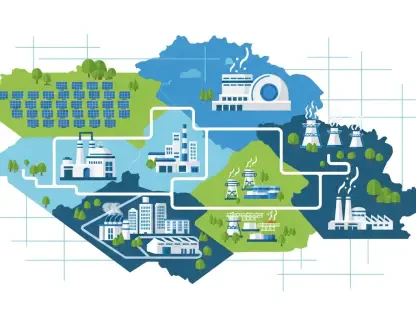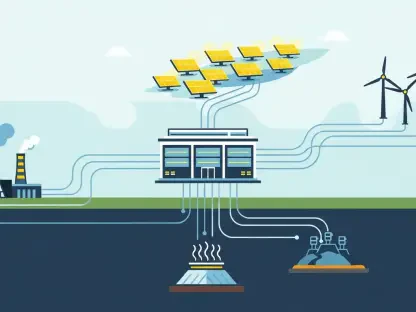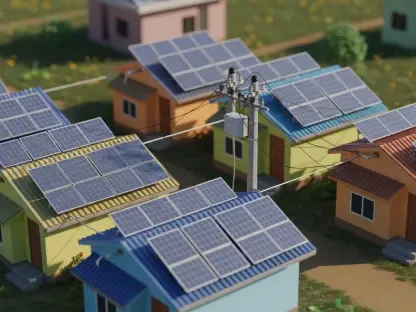In the face of increasing environmental challenges, the need for resilient energy grids has never been more critical. Recent events, such as the extreme weather conditions in Texas, underscore this urgency. CenterPoint Energy’s initiative to deploy 15 large mobile generators to San Antonio marks a significant step toward enhancing grid resilience. This move, prompted by the proposed retirement of CPS Energy’s V.H. Braunig Units, demonstrates a strategic shift in energy management aimed at mitigating power shortages and maintaining stability.
Developing Trends in Mobile Generators
Growth and Adoption of Mobile Generators
The past few years have witnessed a notable increase in the deployment of mobile generators, a trend driven by the desire to fortify energy grids and counter unforeseen disruptions. Data from credible sources reveal a sharp rise in the adoption of these mobile units, with regions susceptible to frequent weather extremes leading the charge. As utility companies strive to ensure uninterrupted power supply, mobile generators have emerged as key assets in stabilizing energy distribution networks.
The surge in mobile generator usage is further evidenced by statistics highlighting the expansion of these assets across energy sectors. Reports demonstrate a growing number of utilities integrating mobile units into their infrastructure, emphasizing a shift from reactive to proactive energy management practices. This evolution underscores the commitment of energy providers to invest in technologies that enhance grid resilience.
Real-World Applications and Innovations
Mobile generators have effectively navigated situations demanding immediate energy support, proving their value as versatile tools for grid stabilization. One compelling case is CenterPoint Energy’s operation in San Antonio, a strategic deployment prompted by the need to mitigate potential energy deficits due to the retirement of key power units. This application highlights mobile generators’ role in averting crises in real-world scenarios where grid stability is paramount.
Innovative technologies are reshaping the functionality and efficiency of mobile generators. Leading companies are pioneering advancements that improve the responsiveness and adaptability of these units. Enhanced automation, energy management systems, and integration capabilities are setting a new standard, driving the trend forward and ensuring mobile generators can seamlessly support grids during unpredictable events.
Expert Insights on Grid Resilience
Industry experts emphasize the transformative role mobile generators play in enhancing grid resilience. Their insights reveal that while mobile generators offer significant benefits, effectively integrating them into energy systems presents challenges. However, benefits such as enhanced adaptability, quick response capabilities, and reduced downtime weigh heavily in favor of their widespread adoption.
Experts also highlight the transformative potential mobile generators hold for modern energy infrastructure. By complementing existing energy assets, these generators can ensure continuity and reliability, even amid increasing environmental uncertainties. Industry leaders agree that incorporating mobile generators into grid resilience strategies can yield substantial long-term advantages, leading to more stable and reliable energy delivery systems.
Future Outlook and Industry Implications
The future of mobile generators within the energy sector appears promising, with potential advancements on the horizon. Anticipated developments include increased efficiency, enhanced energy storage solutions, and improved integration with renewable energy sources. As technologies advance, mobile generators are poised to become integral components of holistic grid management systems, delivering superior reliability and flexibility.
Industry implications of this trend are far-reaching, impacting various sectors dependent on consistent energy supply. The shift toward mobile generators encourages electric utilities to explore innovative grid management solutions. While challenges like regulatory compliance and integration complexities must be addressed, the benefits, such as reduced operational risks and enhanced service continuity, suggest a strong case for continued investment in mobile generators.
Conclusion and Key Takeaways
Mobile generators have emerged as pivotal tools for strengthening grid resilience, offering adaptable and reliable solutions in the face of environmental challenges. This article highlights their growth, real-world applications, expert opinions, and future potential, emphasizing their significant contribution to energy infrastructure. The evolving trend points to a future where mobile generators play a crucial role in maintaining reliable energy delivery while addressing the dynamic challenges of modern energy landscapes. Looking ahead, further exploration and investment in mobile generator technologies are essential, as they provide a pathway to enhanced grid stability and energy security.









